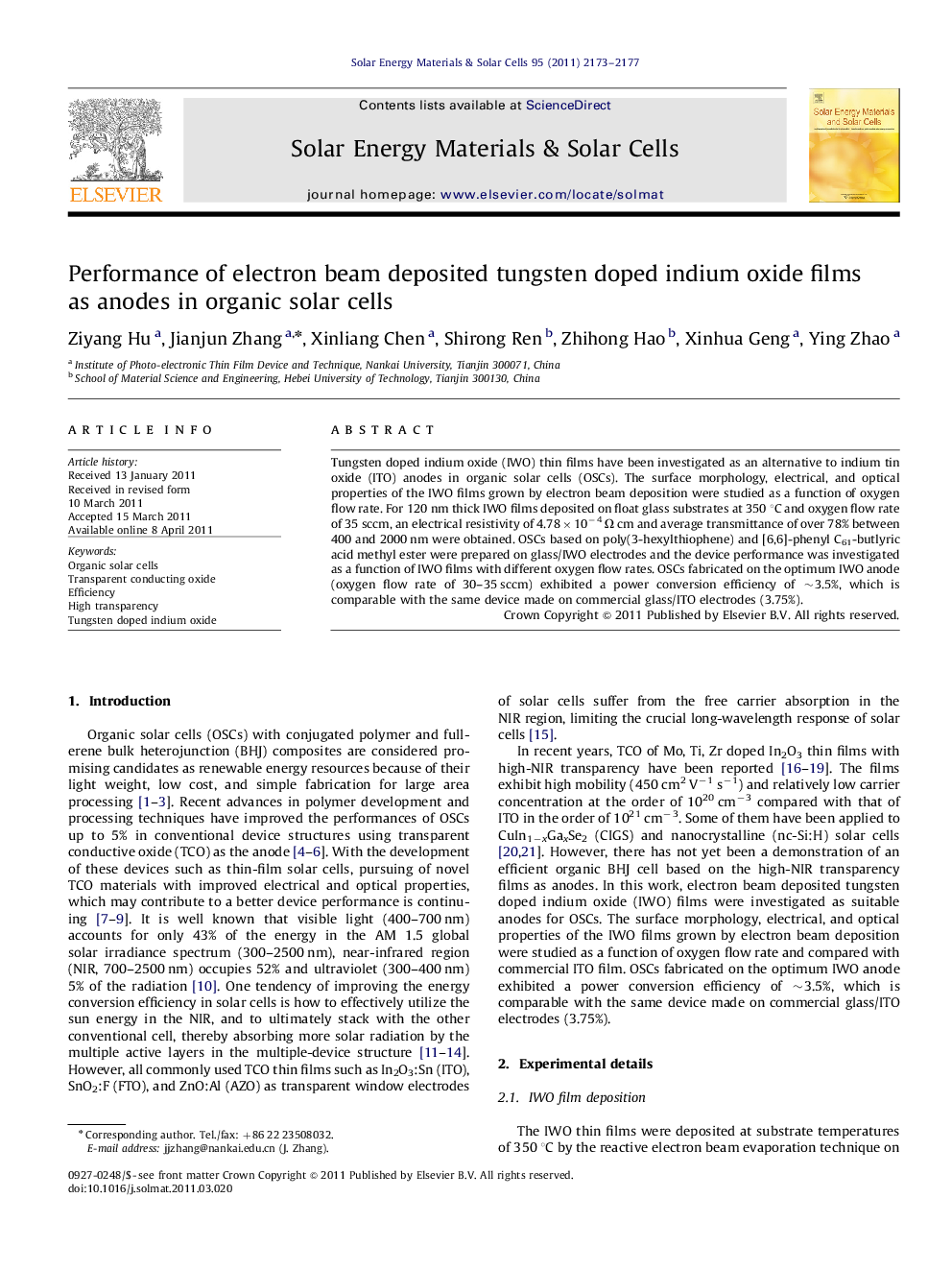| Article ID | Journal | Published Year | Pages | File Type |
|---|---|---|---|---|
| 78764 | Solar Energy Materials and Solar Cells | 2011 | 5 Pages |
Tungsten doped indium oxide (IWO) thin films have been investigated as an alternative to indium tin oxide (ITO) anodes in organic solar cells (OSCs). The surface morphology, electrical, and optical properties of the IWO films grown by electron beam deposition were studied as a function of oxygen flow rate. For 120 nm thick IWO films deposited on float glass substrates at 350 °C and oxygen flow rate of 35 sccm, an electrical resistivity of 4.78×10−4 Ω cm and average transmittance of over 78% between 400 and 2000 nm were obtained. OSCs based on poly(3-hexylthiophene) and [6,6]-phenyl C61-butlyric acid methyl ester were prepared on glass/IWO electrodes and the device performance was investigated as a function of IWO films with different oxygen flow rates. OSCs fabricated on the optimum IWO anode (oxygen flow rate of 30–35 sccm) exhibited a power conversion efficiency of ∼3.5%, which is comparable with the same device made on commercial glass/ITO electrodes (3.75%).
Graphical abstractFigure optionsDownload full-size imageDownload as PowerPoint slideHighlights► The surface morphology, electrical, and optical properties of tungsten doped indium oxide (IWO) films grown by electron beam deposition were studied as a function of oxygen flow rate. ► For 120 nm thick IWO films, an electrical resistivity of 4.78×10−4 Ω cm and average transmittance of over 78% between 400 and 2000 nm were obtained. ► IWO thin films have been investigated as an alternative to indium tin oxide (ITO) anodes in organic solar cells (OSCs). ► OSCs fabricated on the optimum IWO anode exhibited a power conversion efficiency of ∼3.5%, which is comparable with the same device made on commercial glass/ITO electrodes (3.75%).
